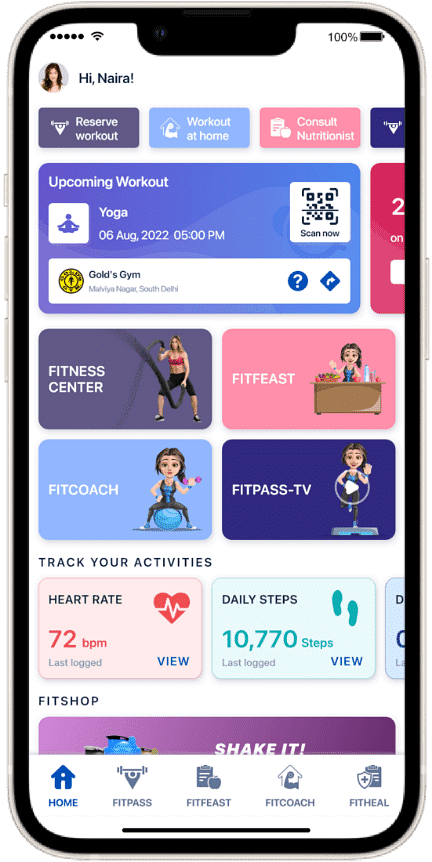Pilates: The Friendly Workout Routine That Boosts Your Overall Fitness
Pilates is one of the best low-key and friendly workouts you can find. Whether you are a beginner or a hardcore fitness enthusiast, you can always perform Pilates. It is a moderate intensity exercise routine that tones your abs, improves posture, enhances energy and saves you from bone loss.
But there are certain technicalities that you should know about Pilates Exercise before trying it. This exercise routine consists of principles and its reps hold a lot of significance. Here, let’s get to know how Pilates came to being and how it is an effective form of workout.
How Pilates Came into Existence?

Pilates was developed in the 20th century by a German physical trainer, named, Joseph Pilates. Joseph believed that mental and physical health is correlated. Therefore, he wanted to formulate a routine that would strengthen both the body and the mind. Initially, he named this routine “Contrology” as Pilates involves resistance and slow movements.
Interestingly, he got the inspiration to create his own workout regime when he was held at the Knockaloe Intermittent Camp during World War I. The purpose of the exercise routine of Pilates was to stretch, strengthen, and perfect body alignment. This was attained by the mat workout.
Equipment required for Pilates was formerly called apparatus. These included the Cadillac, High “Electric” Chair, Spine Corrector, Pedi-Pole, Ladder Barrel, and Wunda Chair.
Principles on which Pilates Works

- Breathing: Breathing plays an integral role in Pilates as it enhances blood circulation. While performing Pilates, you will have to perform posterior lateral breathing in which you would have to breathe into the back and the sides of your rib cage.
- Concentration: Pilates demands your complete concentration so that you maintain the perfect posture while performing the exercises.
- Control: Pilates was initially called Contrology for a reason. It is because the central idea behind Pilates is muscle control. All exercises in Pilates provide resistance, and therefore establishing control of the movements.
- Centering: Pilates concentrates on the core. The core includes the abdominal muscles, also known as the “powerhouse” of the body. Every movement in Pilates begins from the core and extends to the limbs.
- Flow: Pilates incorporates elegant body movements with the help of timely transitions. There’s no rigidity in this exercise routine. Each movement is performed to its extreme end.
- Precision: Precision is required in each exercise movement while performing Pilates. Proper alignment and posture should be maintained as well. It saves you from muscle imbalances and promotes proper coordination.
Why does Pilates have lesser reps?

Pilates exercise involves not more than six repetitions. It is because this form of workout does not believe in quantity but quality. Both your body and mind should be involved in the exercise. Based on the principles stated above, Pilates lays much more stress on developing the perfect posture rather than doing it 10 – 15 times.
Furthermore, Pilates is not about developing muscles in certain parts of your body. It is about strengthening your core and limb muscles, at the same time maintaining a lean, symmetrical, and graceful physique.
6 Major Benefits of Pilates

- Weight Loss: Pilates is an overall workout routine with its focus on the core that helps in weight loss and body toning. With heightened stress on the abdominal muscles, hips and thighs, proper and regular practice of Pilates gives you great abs.
- Improves Posture: It is important to maintain the perfect body alignment while performing Pilates. This helps in improving your posture, imbibing grace to every movement.
- Back Pain: Apart from being an effective aid to curb osteoporosis, one of the other prominent health benefits of Pilates includes strengthening the spine. So, if you are suffering from chronic back pain, try Pilates.
- Increases Energy: The breathing technique of complete inhalation and exhalation while performing Pilates increases oxygenated blood circulation in the body. This improves the heart and the muscle conditions, revitalizing and strengthening the body.
- Strength without Bulk: Strength does not always mean a muscular body. You will be strong if your bones and muscles are strong. The resistance involved with the different exercises of Pilates, increases your endurance without making you muscular.
- Increases Awareness: As we learned previously, Pilates is aimed to strengthen both the body and mind. The breathing technique, resistance, elegant transitions, and your complete involvement in the exercise enhance your concentration. It makes you more aware of your surroundings as well as yourself.
In the hustle of life, perform the smooth workouts of Pilates for a great day ahead.
Download the FITPASS app to find the best fitness centers near you to practice Pilates. It is the one access pass to all your health and fitness solutions. Scroll through over 1750 fitness centers, choose and you are all set to go.


